The worst has happened – you are in Canada, you applied for a work permit extension, or study permit extension, and it was refused. You’re no longer eligible to re-apply, and you have no options left. Or so you thought.
In situations where you are not eligible for any work permit or study permit programs, but have a compelling need to stay in Canada to complete your studies, gain work experience, or some other important reason, you may be able to apply for a temporary resident permit (“TRP”) and work or study authorization.

What is a TRP?
A TRP is a discretionary kind of application available to people who are inadmissible to Canada or who don’t meet the requirements of the legislation, and is issued based on a compelling, short-term need to stay in Canada. ‘Discretionary’ means that it is up to the individual assessing officer to decide if you should be issued a TRP or not, and they have no obligation to do so. This is why ‘compelling need’ is so important – you need to show the assessing office that you have a significant need to stay in Canada despite your inadmissibility. There is no guarantee that you will be issued a TRP if you apply for one, even if you think your reasons for a TRP are compelling, as it is ultimately up to the assessing officer to assess the need.
You can think of TRPs as a kind of band-aid solution – if you are issued a TRP, it will not serve as a permanent solution, but typically will allow an applicant to figure out their next steps and act as a stepping stone to sorting out status issues. A TRP allows you to stay in Canada temporarily when you may otherwise be ineligible to do so.
There are a few specific types of TRPs. The standard TRP is for situations outlined above – for whatever reason, you are inadmissible to Canada, ineligible to apply for a work, study, or visitor permit to Canada, and are unable to restore your status, but need to stay in Canada for a particular compelling reason.
TRPs can also be used to help overcome criminal inadmissibility in certain situations. Commonly, we see this with US visitors seeking to enter with Driving Under the Influence (“DUI”) charges [in Canada now knows as Operation of a Conveyance While Impaired] or those with unresolved charges but need to come to Canada for a temporary, often economic, purposes.
For people who have experienced family violence, there are Family Violence TRPs – these are typically processed more quickly due to the urgent nature of the application, and may be used to help people who are fleeing abusive situations and are left without status as a result. A common scenario involved a partner who was going to be sponsored for permanent residence by an abusive ex, and has fled the relationship, leaving them without status and with few options.
There is also a specific type of TRP aimed at helping victims of trafficking in persons (“VTIP”). VTIPs are often brought to Canada without proper authorization, through no fault of their own, and when they flee their abusive situations they are left in a precarious situation. VTIP-TRPs are also supposed to be processed quickly given the serious nature of the application and the vulnerability of the applicants.
This blog post will focus primarily on the standard TRPs for folks who are already inside Canada and become inadmissible and will go over some of our office’s recent experiences with TRPs.
When might I need a TRP? One of the scenarios our office has seen a lot lately involves students who are refused extensions to their study permits, but have not yet completed their studies and need a TRP and study permit in order to do so. In this situation we would typically ask for a multiple-entry TRP, so the student can leave and re-enter Canada, and a study permit of a sufficient length to allow the student to complete their studies. Another scenario we have come across frequently involves international students who have graduated from Canadian post-secondary institutions, applied for their Post-Grad Work Permit (PGWP) and been refused. For students who have been refused within the 180-day eligibility period, reapplication is an option. For those many students who received their refusals outside the 180-day eligibility period, a TRP and open work permit may be an option for regularizing your status and gaining your Canadian work experience. We typically ask for an open work permit that is valid for the length of time the applicant’s PGWP would have been valid for, and a multiple-entry TRP of the same length. The rest of this blog post will focus on this particular situation, and how a TRP may help you.
Applying for a TRP
Applying for a TRP involves making a strong and compelling argument for why you need to stay in Canada. IRCC will expect an explanation letter from the applicant, outlining (among other things) why they lost their status, why they need a TRP, and the compelling reasons the applicant has for staying in Canada. Compelling reasons can include family ties, job qualifications, economic contribution, attendance at an event, benefits to an individual, and protection of public health, among other things. TRPs are an exceptional measure, so ensuring that you put your best foot forward and make as strong an argument as possible is key.
Along with your explanation, you may have a legal representative who provides submissions that echo the need for the applicant to stay in Canada, citing case law, IRCC policies, or other supporting legal documentation. Supporting evidence is also crucial – showing that you do meet the requirements for the TRP, that the reason for refusal is minor or was an error, and providing clear evidence of why you must stay in Canada is all very important. The more evidence you have showing your contributions to your workplace, field of employment, or what have you, the better. IRCC will look for the following risk factors, which should be addressed in your representative submissions and/or your own explanation letter:
- History – Is there a pattern of non-compliance [A41] with the IRPA or IRPR? Is the violation inadvertent and accidental or the result of careless or flagrant disregard for the law?
- Credibility – Credibility may be assessed during an interview. See Temporary resident permits (TRPs): Information gathering (including interviews) for additional information on when an interview is required.
- Previous removal – Have the original grounds for removal been overcome or diminished? Are there any statutory bars, other than the removal order, remaining against the person?
- Controversy – Are there high-profile, complex or sensitive elements of the case that warrant referral or consultation with the CMB?
- Social assistance – If there is a possibility that the foreign national intends to become a permanent resident, is there any risk that the person would require social assistance?
See here for more information. In addition to the written supporting documents, you will be required to complete and submit the IMM5708 – Temporary Resident Permit Application. You will also need to fill out an IMM5710 – Application to Work in Canada form, and an IMM5709 – Application to Study in Canada form. Why two forms? If you are applying for a TRP and open work permit because you have lost status, you will need to restore your status to what you had prior – that of a student. Being restored to student status will allow IRCC to issue you a work permit, so it is important to include both forms and indicate that you are applying for a TRP when filling out the form (at the top of the first page). (Note: if you are already a TRP holder who is applying for a subsequent TRP along with a work or study permit, you only need to complete the IMM5709 or IMM5710 form, and do not need to submit another IMM5708).
There is a cost associated with applying for a TRP – the study permit and restoration cost is $350, the work permit is $155, plus a $100 open work permit holder fee, and the TRP generally is an additional $200. Depending on your individual situation, if you are not applying for a PGWP or were a worker before and do not need to restore to student status after losing your status in Canada, your fees will be different – this is simply a general guide.
How do I submit my TRP application?
The TRP is a rarity among immigration applications – unlike most applications these days, TRPs can only be applied for by paper. You will need to compile all your documents (see the IRCC Guide here) and send them to IRCC Case Processing Centre in Edmonton. For VTIP-TRPs and Family Violence TRPs, you may be able to submit your application to your local Case Processing Centre.
Conclusion
While not a be-all, end-all, permanent solution, TRPs can be incredibly useful for applicants who are inadmissible to Canada but have a compelling reason to stay on a temporary basis. They are discretionary and require significant and serious need to stay in Canada, so there is no guarantee that a TRP application will be approved. Nevertheless, they can be effective, so if you or a loved one have been refused a PGWP outside the 180-day eligibility period, or are otherwise inadmissible to Canada and concerned about your status, please reach out to Heron Law Offices for an initial consultation to discuss your options. Refusals are scary, but you may have other options available to you to gain temporary status in Canada. When in doubt, seek professional legal advice.



